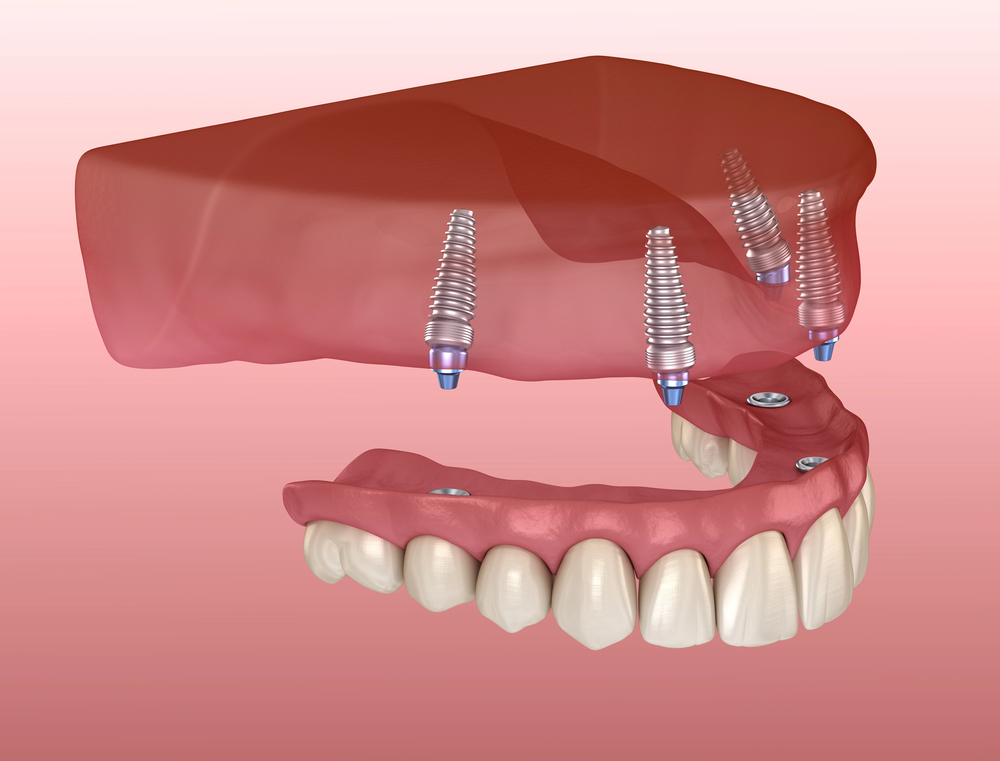When patients ask, “What are the best ways to improve the stability of dentures?” they’re often experiencing difficulty chewing, speaking, or keeping their dentures securely in place. Denture instability is a widespread issue, particularly for edentulous individuals relying on conventional removable prosthetics. Fortunately, advancements in prosthodontics offer reliable, evidence-based solutions that significantly enhance stability, function, and comfort.
At Implant Attachments, we’re dedicated to helping dental professionals deliver secure, stable, and life-changing denture solutions. Whether you’re restoring a single arch or managing complex edentulous cases, reliable attachment systems make all the difference. Visit us on our website or call us at (940) 784-3559 to learn more about our innovative technology and superior products.
From implant-supported prostheses to digital workflows and refined clinical techniques, this article will explore what are the best ways to improve the stability of dentures based on current best practices and recent research.
Implant-Supported Overdentures: The Gold Standard in Stability
Implant-supported overdentures (ISODs) are widely regarded as the most effective solution for denture instability, especially in the mandibular arch, where traditional dentures often fail to achieve sufficient retention. By placing two to four implants in the jaw, clinicians create anchorage points that allow the denture to lock into place using attachments like balls, bars, or locators.
A 2025 study found that ISODs provided significantly better retention, patient satisfaction, and long-term functionality compared to conventional dentures. When considering what are the best ways to improve the stability of dentures, ISODs should be at the top of the list. They offer a functional, aesthetic, and psychological boost to patients struggling with ill-fitting prosthetics.
Bar and Locator Attachment Systems: Secure and Versatile Options
When restoring edentulous arches with implant-retained prostheses, bar and locator attachments offer distinct advantages in stability. Bar attachments distribute masticatory forces across multiple implants, making them ideal for patients with reduced bone density or complex anatomy. Locator attachments, on the other hand, provide strong retention with easy maintenance and hygiene access.
Bar-retained overdentures often outperform individual locators in terms of long-term stability and patient-reported outcomes. So, when assessing what are the best ways to improve the stability of dentures, selecting the right attachment system is key. ImplantAttachments.com offers a wide variety of these systems to suit both clinical and patient-specific needs.
CAD/CAM Digital Dentures: Precision Fit, Improved Retention
The use of digital dentures fabricated through CAD/CAM technology represents a major advancement in prosthodontics. These dentures are designed and milled using digital scans, resulting in exceptional accuracy and fit. Better adaptation to the patient’s soft tissue reduces movement, improves suction, and minimizes the need for repeated adjustments.
A 2024 study found that digital dentures delivered superior retention and tissue adaptation compared to conventional analog techniques. For clinicians considering what are the best ways to improve the stability of dentures, digital workflows offer speed, precision, and enhanced patient comfort, all of which contribute to prosthetic success.
Advanced Impression and Border Molding Techniques
Proper impression technique and border molding are essential for maximizing denture retention and stability. Errors in this step can lead to poorly fitting bases, causing movement, pressure sores, and dissatisfaction. Using custom trays, polyvinyl siloxane materials, and refined border molding helps capture functional anatomy and soft tissue movement more accurately.
When asking what are the best ways to improve the stability of dentures, clinicians must recognize the foundational importance of capturing precise, dynamic impressions that align with the patient’s functional needs.
Posterior Palatal Seal: Crucial for Maxillary Dentures
Maxillary dentures rely heavily on a posterior palatal seal to create suction and prevent dislodgment. When properly contoured, this seal allows for a vacuum effect that keeps the denture seated during speech and mastication. Inadequate sealing in this area is a frequent cause of upper denture instability.
Therefore, any discussion of what are the best ways to improve the stability of dentures must include precise shaping of the posterior palatal seal to optimize upper denture performance.
Denture Adhesives: Temporary Support When Fit Is Compromised
While adhesives are not a substitute for well-fitting dentures, they can enhance short-term retention in certain clinical situations. Patients transitioning to a new prosthesis, undergoing healing post-extraction, or managing mild looseness can benefit from modern adhesive formulations.
Today’s adhesives are safe, effective, and widely accepted by both patients and clinicians. For practitioners wondering what are the best ways to improve the stability of dentures, recommending a high-quality adhesive may offer temporary relief or enhance function between relines or new fabrications.
Ongoing Maintenance and Periodic Relines
Denture fit changes over time due to alveolar bone resorption. As the bone shrinks, dentures become loose, reducing stability and increasing discomfort. Regular follow-up appointments allow dentists to assess the fit and provide relining services as needed. Hard and soft relines can restore intimate contact with the soft tissues and improve suction.
Soft liners, in particular, offer comfort and improved retention for patients with sensitive tissues or severe ridge resorption. This proactive approach is essential when considering what are the best ways to improve the stability of dentures. Maintenance is not optional – it’s a key component of long-term success.
Customizing Treatment Based on Anatomy and Needs
Every patient presents with unique anatomical challenges and lifestyle goals, so there is no one-size-fits-all answer to denture stability. A patient with a highly resorbed mandible may require implant support, while another with adequate bone may benefit from digital fabrication and proper border molding alone.
Clinicians must carefully assess bone volume, soft tissue resilience, medical history, and patient expectations before recommending a solution. The best answer to what are the best ways to improve the stability of dentures is always a customized one based on thorough diagnosis and available resources.
Combine Technology with Technique at Implant Attachments
So, what are the best ways to improve the stability of dentures? The answer lies in combining proven clinical techniques with modern technologies. Implant-supported overdentures, bar and locator attachments, CAD/CAM fabrication, and refined impression methods all contribute to more stable, functional, and comfortable prostheses. Denture adhesives and soft relines can further support patients during transitions or anatomical challenges.
At ImplantAttachments.com, we support dental professionals with advanced attachment systems and prosthetic solutions designed to enhance stability and improve patient outcomes. Explore our selection today and take the next step toward providing secure, life-changing dentures for your patients. Need help? Contact us online anytime or call us at (940)784-3559 for assistance.



